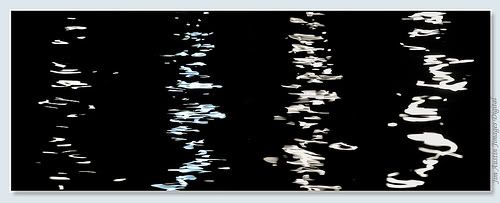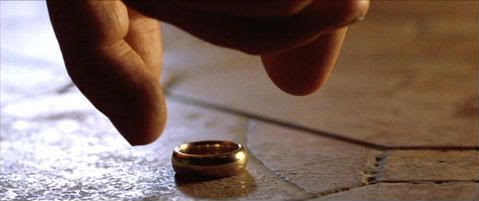
In response, Alatar wrote:
This really got me thinking about my own reaction when I first read the Ambarkanta, and first saw that specific drawing. For me, it pulled me INTO the story like never before, because it answered so many questions that had been swirling about in my mind for a very long time. I found (and still find) the structure of Tolkien’s cosmos to demonstrate an elegance of balance and harmony that is deeply compelling. The world in the midst of the globed Walls of this cosmos was perfectly symmetrical when viewed from above, below, and from what would have been the “flat-earth” equivalents of North and South. The original land of Middle-earth, was exactly centred within the globe:I really, really dislike the Flat Earth and other "Shaping of the World" concepts. I know it's intended to be a Mythology, but it feels incredibly contrived to me. I love the fact that its glossed over in the Silmarillion, because it doesn't take me out of the story the way this does. I can accept the vagueness of the Sun and Moon being dragged beneath the Earth. I can accept the bending of the world so that the straight road leads out of Arda.
I just can't accept images like the one Ath posted.
Looking at the diagram, I am reminded of the importance Tolkien seems to place on the concepts of “height” and “centrality”. The Valar’s first abiding place within Arda, the island of Almaren, was set in the very center of a lake that was created at the very center of Middle-earth, which by my reckoning, would most likely make it stand within the highest level of the great primeval continent. I think this idea is repeated in many places in Tolkien’s writings, from the great mound of Cerin Amroth, the “heart” of Lothlórien (whose very structure seems to mirror, in many ways, the structure of the greater cosmos that Tolkien describes), to Meneltarma, the blessed mountain at the center of the Númenor.Tolkien wrote:It was highest in the middle, and fell away on either side into vast valleys, but rose again in the East and West and again fell away to the chasm at its edges. And the two valleys were filled with the primeval water, and the shores of these ancient seas were in the West the western highlands and the edge of the great land, and in the East the eastern highlands and the edge of the great land upon the other side. But at the North and South it did not fall away, and one could go by land from the uttermost South and the chasm of Ilmen to the uttermost North and the chasm of Ilmen. The ancient seas lay therefore in troughs, and their waters spilled not to the East or to the West; but they had no shores either at the North or at the South, and they spilled into the chasm, and their waterfalls became ice and bridges of ice because of the cold; so that the chasm of Ilmen was here closed and bridged, and the ice reached out into Vaiya, and even unto the Walls of the World.
Of course, this symmetry was short-lived, but Arda remained “flat”, held within the center of successive layers of substances known as Vista (the air of clouds and winds, and of the mortal lands), Ilmen (the air of the luminaries –Sun, Moon, and stars – and of the immortal lands) and Vaiya (the great “Enfolding Ocean” that was akin to both air and water and yet neither air nor water). Even after the world is made round, it is still centered within the globe and still engulfed by Vista, Ilmen and Vaiya, as seen in this extremely sketchy diagram of Tolkien’s (which also shows “The Straight Path” that leads to Aman, which has been taken out of the physical realm of Arda):

Thinking back to that first delighted reaction of mine to the cosmology revealed in the Ambarkanta, I suppose that it was based on the fact that I never really looked upon Middle-earth as this world, as my world, somehow veiled by the mists of Time and Myth. From my very first reading of The Lord of the Rings, I considered the physical world that Tolkien had revealed to me as something deeply familiar and yet wholly other than what I knew to be the earth and sky and heavens. I’ve always been rather fascinated when reading people’s thoughts on where in the modern world Rohan or Gondor or The Shire would be located, or what Age the present could be counted as. It never occurred to me to consider these things, even, as I think others most often consider them - as interesting forays into the realm of “what if”.
I’m quite sure that it was the greater myth that was wound so deftly within the tale of LOTR that caused me to think of Middle-earth as part of a cosmos that could not be explained by the physical laws of my world. Although not all of the pieces were there for me to fit together before the Sil was published (far from it, actually), there were enough glimpses of an unbroken connection between a world that physically, was absolutely familiar, to one that could only be viewed as mythologically symbolic, to make me feel that the bright star Sam saw twinkling in the heavens over Mordor was not the same as a bright star that I would look up and see. Somehow, I knew that although I well understood the hope it kindled in his heart, Sam’s understanding of where that star was placed and what that star was made of within the construct of his universe was fundamentally unlike my understanding of where that star would be placed and what it would be made of within the construct of my universe. The passage that really stood out for me, especially after reading the Appendices, and more so after reading the Sil, is when Sam and Frodo are speaking of “tales” on the stairs of Cirith Ungol:
That the star I know as Venus, the second planet orbiting the Sun, would be known during the Third Age of Middle-earth as Eärendil The Mariner, sailing the heavens in a celestial ship with a Silmaril on his brow, the father and grandfather of characters walking upon the earth some six thousand years later………well, the thought of reconciling THAT cosmos with what I knew of my own, was something that definitely took me out of the story. And yet, I still could not really visualize such a cosmos; I couldn’t fully “reconstruct” it in my mind, for all the power and beauty of the words that described its formation and its workings in the Sil. It was, finally, the precision of its description in the Ambarkanta, accompanied by a series of diagrams, that allowed me to understand the cosmological structure of this universe that I “knew” so well for so long.”Beren now, he never thought he was going to get that Silmaril from the Iron Crown in Thangorodrim, and yet he did, and that was a worse place and a blacker danger than ours. But that’s a long tale, of course, and goes on past happiness and into grief and beyond it – and the Silmaril went on and came to Eärendil. Any why, sir, I never thought of that before! We’ve got – you’ve got some of the light of it in that star-glass that the Lady
gave you! Why, to think of it, we’re in the same tale still! It’s still going on.”
And that first diagram, in the elegance of its simplicity and symmetry, in the power of its symbolism of a cosmos that perfectly fits the definition of “the universe regarded as an orderly, harmonious whole, distinct from chaos”, continues to make the tale, for me, far more believable and real because it “fits” so beautifully within the construct, and springs so naturally from that construct's very conception.
So......how do others feel about this basic structure of Tolkien’s “physical universe”? Does the concept of a “flat earth” at the center of an entire globed cosmos intrude on the story, as Alatar said it does for him? Would it have made a difference if Tolkien had started out with a similar “globed universe” with a spherical world at its center? Have you considered the similarities and differences between our physical world/universe and the one you discovered in LOTR and/or the Sil, and if so, do such concepts affect your "mindset" as you read either of these tales?
<edited to insert a word and remove a word.......balance achieved>



